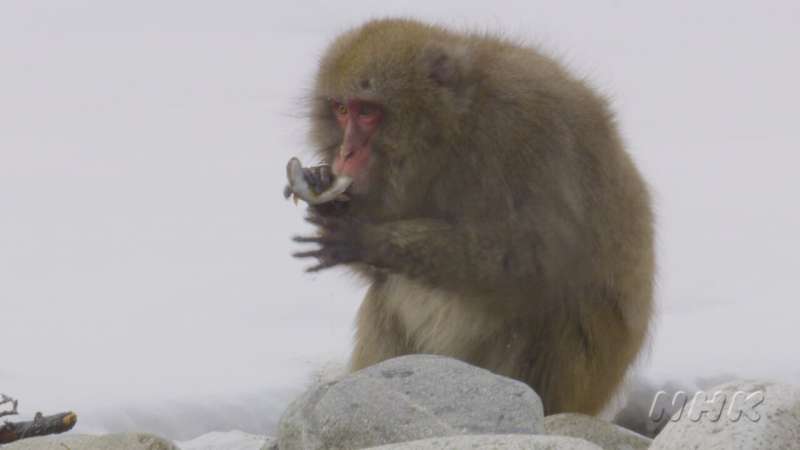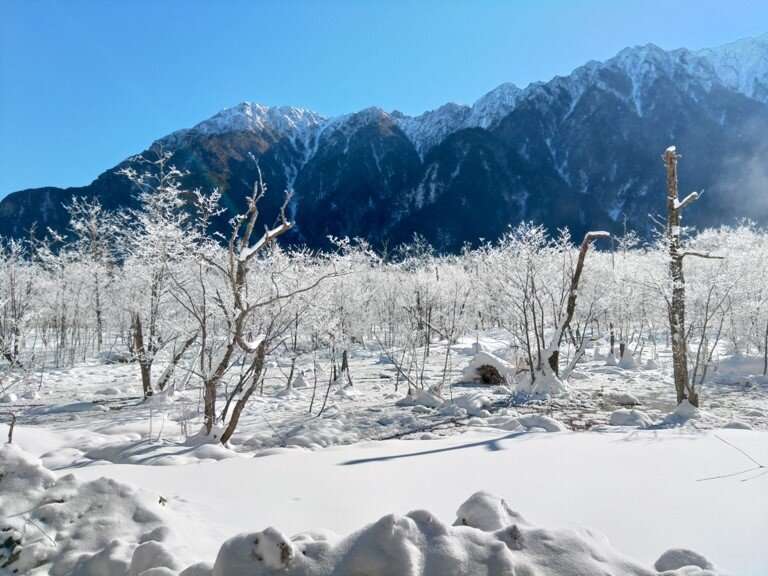This article has been reviewed according to Science X's editorial process and policies. Editors have highlighted the following attributes while ensuring the content's credibility:
fact-checked
peer-reviewed publication
proofread
Fish-hunting and eating behaviors confirmed in Japanese macaques

Consumption of fish in monkeys has been thought of to be a rare occurrence, potentially even happening accidentally. However, through fecal studies of Japanese macaques in the Kamikochi area, evidence of fish-eating amongst this group of monkeys has been suggested. The frequency in which fish DNA has been detected in feces suggests more intention than simply feeding off of dead or dying fish. Japanese scientists collaborated with an NHK film crew to be the first in the world to study and document the behaviors behind fish-hunting macaques in the Japanese Alps.
Upon further studying using film and sensor cameras, 14 documented cases show these macaques are fishing for sustenance, with an additional six cases of fish capture and feeding being highly likely. These cases were documented amongst at least three different groups of macaques and seem to occur independent of the time of day or weather conditions, though the study only occurred from January to March of 2022. This behavior is significant in the future studying of survival behaviors, how these behaviors were acquired in the first place, and how they might be passed onto future generations.
Recent video evidence shows Japanese macaques engaging in fishing behaviors to sustain themselves throughout the barren, harsh winter months in the Japanese Alps. Recently published results support the original report that was published in November 2021 in the same journal which hypothesized these fish-seeking efforts.
The results were published in Scientific Reports.
This catching and feeding behavior appears to be an extension of existing, documented behaviors of feeding on vegetation that grows above the surface of the snow as well as aquatic plant matter and by extension, insects found on these plants. The streams containing these aquatic plants are also home to many cold-water salmonids, so it's only natural to think perhaps the macaques may stray from their insect meal to a fish one.
"Video analysis has also shown that during these behaviors, when the fish are nearby, their attention is diverted to the fish. We interpreted this sequence of behavior as a pre-adaptation to fish-eating, and that fish-eating behavior may have evolved through these several stages," said Masaki Takenaka and Koji Tojo, corresponding author and Professor of the Department of Biology at Shinshu University.
These "pre-adaptations" are the proposed mechanism for the fish-hunting and eating behaviors observed, though evolutionary pressures due to the unrelenting winter conditions can be contributors to the unique behavior that has been observed in the macaques of this area.
After confirming fishing behaviors in Japanese macaques in the Kamikochi region, the next step is to further understand why, and how, these behaviors developed.

"Having obtained evidence that Japanese macaques in the Kamikochi catch and eat live fish, the next step for us in this research was to investigate how these fish-eating behaviors spread within the macaque group—Is it genetic? Is it a kind of culture that can be transmitted within the group?" Tojo asks. Interestingly, some of these macaques are observed to disregard the fish entirely. Whether this is genetic or something else entirely is yet to be seen.
Now, after identifying 200 individuals across four distinct groups, Tojo and his team seek to identify relationships based on these individuals and their fish-seeking (or fish-avoidance) behavior to see how it may be passed onto other individuals in the group and future generations.
More information: Masaki Takenaka et al, Behavior of snow monkeys hunting fish to survive winter, Scientific Reports (2022). DOI: 10.1038/s41598-022-23799-1
Journal information: Scientific Reports
Provided by Shinshu University




















